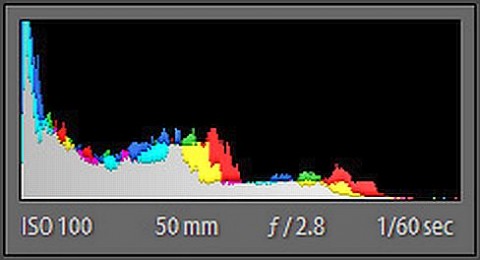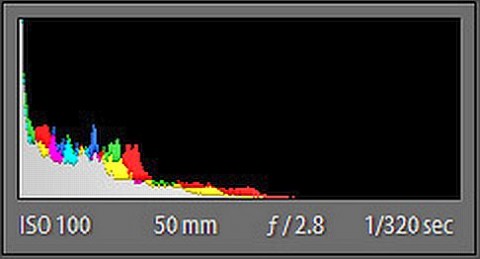What is a histogram good for?
Do you know what a histogram is good for? Unfortunately the histogram is something a camera's manual does not give a good description about. It is a tool for evaluating the exposure of your photos and to help you adjust you lighting levels for better results.
The histogram is one of the most useful tools you have included with your digital camera. But it is often the tool that most photographers least understand. If it is used correctly it will help you deal with your exposure problems. Every digital camera has a histogram function that can be displayed directly or superimposed over the picture you have just taken on the back of the LCD screen.
Here are few basics to help you understand the histogram means on your camera:
1. Histogram goes off the edge on the right-hand side. This will result in a loss of highlight detail and, in a worst case scenario; you will see a tall line at the right-hand edge of the histogram.
2. Histogram goes off the edge on the left-hand side. This will result in shadow that is unrecoverable and will mar your jpegs. You will see there is no or little exposure to the right side of the center of the image and there is a pile that peaks at the left-hand edge of the photo.
3. Histogram reaches right across the photo (the entire left or right sides of the photo can be almost a straight line). An image with this type of histogram is hard to print without any image manipulation. You will see small lines at the edges that will mean a scene's exposure is outside your camera's ability to capture, but what your camera did get was captured in low contrast.
4. Histogram peaks in a narrow area and does not reach towards the sides. This is a low contrast image that will have you manipulating the image to highlight the detail. In the worst case the peak is in the lower ¼ scale, indicating underexposure, which would only get worse if you try to correct the exposure with imaging software.
Here are a few histograms examples to take a look at.
The first histogram shows normal exposure. During normal exposure the camera's sensor records a wider range of tones and will give you more flexibility when manipulating your image with software on the computer. You can enlarge this image as much as you like without losing any quality in the photo results or any pixilation.
histogram of normal exposure
The next histogram has low exposure. In this histogram there are fewer unique tones captured which can lead to banding on the resulting images. Keep in mind that trying to lighten shadow detail that is too dark (eg. making shadowed eyes visible) then a lot of graininess will be added to the photo.
histogram of low exposure
Experiment to help you get better results as you learn to use your digital camera's histogram function to get top quality photos every time.




